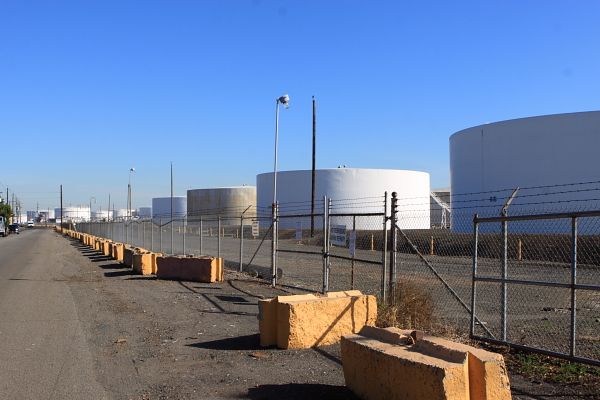Media Confusing Exxon Bayway Remediation (Cleanup) With Natural Resource Restoration
The Exxon Deal Is Even Worse Than Portrayed
“Restoration” returns site’s natural resources to pre-discharge conditions
“Remediation” only requires containment or capping, not complete cleanup
This is just a brief note to clarify a misconception in media reports of the Christie Administration’s controversial sweetheart “Natural Resource Damage” (NRD) deal.
When the press, legislators, and environmentalists figure it out, there will be a whole new round of outrage.
The misconception is understandable, because a lot of political reporters who don’t write about environmental issues are involved, and even the few experienced environmental reporters left are focused on the scandal and political abuses.
The misconception is masking the fact that the Exxon deal is even WORSE than it’s being portrayed (and I don’t mean reduction to $225 million and inclusion of other Exxon sites).
What is actually happening under the deal is that Exxon is being let off the hook for over $6 billion in NRD “restoration” AND they will not be required to completely cleanup the huge toxic mess they made.
- A Very Basic Distinction Ignored
The Exxon Bayway sites have been under legal requirement to “remediate” – or cleanup – since 1991, under DEP Administrative Consent Orders (ACO).
For 24 years, that has not happened.
The DEP “Natural Resource Damage” (NRD) claim process began in 2004 and the NRD Settlement was announced yesterday. Here’s the critical text from the AGs press release:
The agreement reinforces ExxonMobil’s obligations to clean up the sites, which are ongoing pursuant to Administrative Consent Orders (ACOs) previously entered into between ExxonMobil and the State Department of Environmental Protection (DEP).
The source of the misconception is conflating and failing to distinguish and explain the environmental and economic differences between “restoration” and “remediation”.
A Natural Resource Damage (NRD) restoration is very different than a remediation, or cleanup.
NRD is in addition to remediation – it can be restoring natural resources in the field at the site, providing equivalent ecological functions or natural resource values off site, and/or financial compensation.
In the Exxon case, I was surprised by the degree to which DEP was using NRD to drive remediation. NRD is a far weaker legal tool than the DEP’s powers to compel remediation, so, that is the red flag that signals what is really going on here.
Here is how DEP defines “restoration” (boldface is mine):
Restoration:is the remedial action that returns the natural resources to pre-discharge conditions. It includes the rehabilitation of injured resources, replacement, or acquisition of natural resources and their services, which were lost or impaired. Restoration also includes compensation for the natural resource services lost from the beginning of the injury through to the full recovery of the resource.
Examples are:
- GROUND WATER: non-point source pollution abatement projects, acquisition of land for aquifer recharge
- WETLANDS and HABITAT: rehabilitation or creation of wetlands / habitat in the appropriate ratios to compensate for the functions and services lost
- INJURED SPECIES: restoration of appropriate habitat and monitoring of success / research projects
- LOST PUBLIC USE: enhanced public access, information and interpretive centers
Keep in mind the “resortoration” objective to “returns the natural resources to pre-discharge conditions” and the “lost public use” – they are key and not required under DEP “remediation”.
Here is how DEP defines “remediation”:
“Remediation” or “remediate” means all necessary actions to investigate and cleanup or respond to any known, suspected, or threatened discharge, including, as necessary, the preliminary assessment, site investigation, remedial investigation and remedial action; provided, however, that “remediation” or “remediate” shall not include the payment of compensation for damage to, or loss of, natural resources.
In order to fully understand what “remediation” means, one needs to understand what “remedial action” means:
“Remedial action” means those actions taken at a contaminated site as may be required by the Department, including, without limitation, removal, treatment measures, containment, transportation, securing, or other engineering or institutional controls, whether to an unrestricted use or otherwise, designed to ensure that any contaminant is remediated in compliance with the applicable remediation standards. A remedial action continues as long as an engineering control or an institutional control is needed to protect the public health and safety and the environment, and until all unrestricted use remediation standards are met.
So, the crucial elements of remedial action and remediation is that DEP allows – at most cleanup sites – for the polluter to install “engineering and institutional controls”.
That is a legal phrase for a cap – merely covering up toxic contamination and leaving it on site. What we call “pave and wave”.
In contrast, the goal of “restoration” is an action that “returns the natural resources to pre-discharge conditions.”
The distinction, applied to the Exxon site is that the DEP NRD restoration is based on complete excavation of millions of tons of contaminated sludge, soil and sediment from hundreds of acres, sometime to a depth of 20 feet or more.
In contrast, the DEP site remediation program would virtually NEVER require complete excavation of that much contamination and would allow much lower cost cleanup options, like caps,stabilization, treatment, and deed restrictions.
Here’s how DEP spins that huge rollback:
Historically, site remediation required the total removal of the contamination source(s) or implementing permanent means to reduce the contaminant levels to accepted Department standards. It has been found that such permanent remedies may be technically infeasible or cost prohibitive; therefore, the need for and use of non-permanent remedies has become more prevalent.
So, what the DEP NRD deal really means is this:
- Exxon is off the hook for over $6 BILLION in “restoration” costs; AND
- Exxon will be allowed to leave massive quantities of toxic sludge, soil, sediments, and groundwater on site.
That is the worst of both worlds – and when the press, legislators, and environmentalists figure that out, there will be a whole new round of outrageous press coverage.
